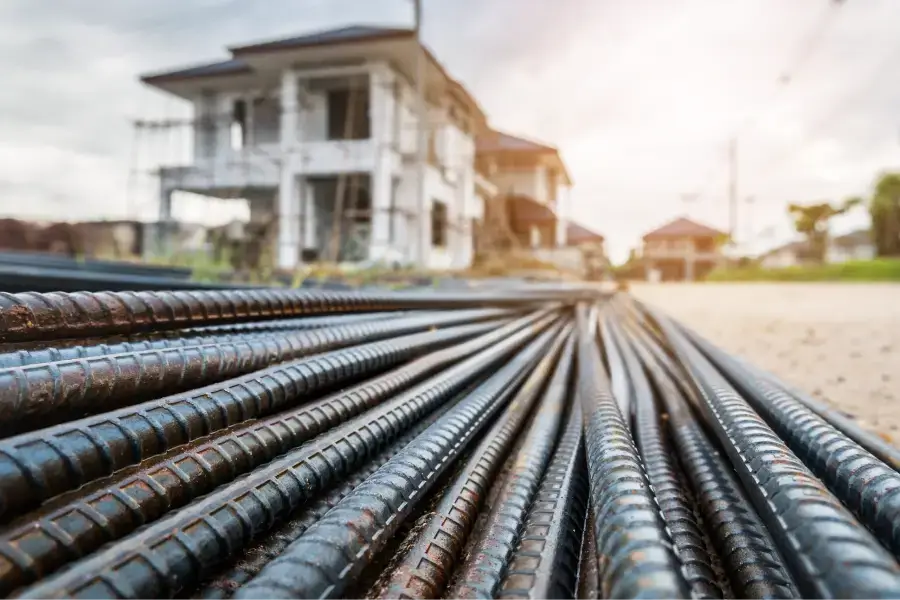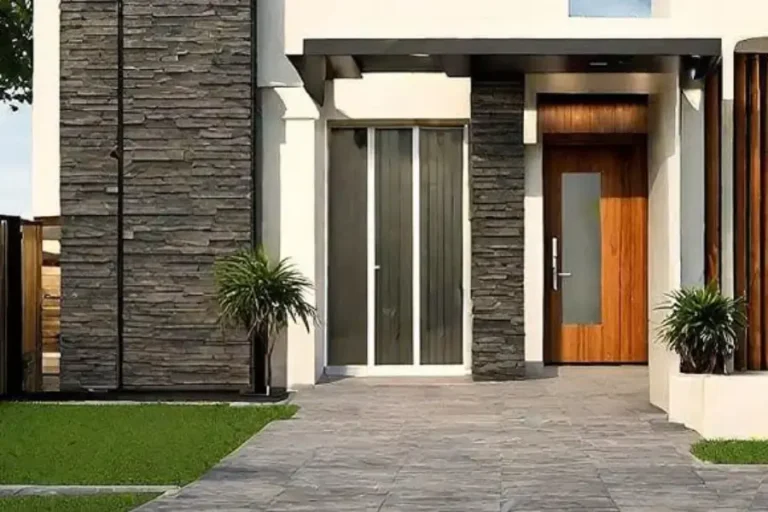Best Steel For House Construction
Interior Design | Architect | Construction Company
Free Consultation
01.
Submit the form
02.
Consultion
03.
Installation

Figuring out which steel is best for house construction can feel overwhelming.
You’re probably worried about making the wrong choice.
A choice that could compromise the safety of your family and the longevity of your dream home.
You see all these technical terms—TMT, HYSD, Fe 500, Fe 550D—and it’s just confusing.
I get it. At InfraLa, we talk to people just like you every single day.
They’re afraid of being overcharged for low-quality materials.
They’re scared that a contractor might cut corners, leaving them with a structure that won’t stand the test of time.
This isn’t just about steel; it’s about peace of mind.
Let’s cut through the noise together. I’m going to break it down for you, just like I would with a friend over coffee.
The Real Problem: Why Choosing the Right Steel is So Hard
Most people building a home for the first time face a few common fears.
They worry about the structural integrity of their house.
Will it withstand an earthquake?
What about corrosion and rust over the decades?
The market is flooded with different brands and grades of steel, all claiming to be the “best.”
This creates a huge trust gap.
You don’t know who to believe.
At InfraLa, we’ve seen the consequences of poor choices firsthand.
We’ve been called in to fix projects where builders used inferior steel to save a few bucks.
The result? Cracks in the foundation, weakened structures, and homeowners facing massive repair bills.
This isn’t a theoretical problem; it’s a real, expensive, and dangerous one.
Understanding Which Steel is Best for House Construction: TMT Bars Explained
Let’s simplify this.
When we talk about steel for homes, we’re almost always talking about TMT bars.
TMT stands for ‘Thermo-Mechanically Treated’.
Think of these bars as having a dual personality.
They have a tough, hardened outer layer and a soft, flexible inner core.
This combination is what makes them so special.
The hard exterior provides strength and durability.
The soft interior gives them ductility, which is the ability to bend without breaking.
This is critical for earthquake resistance.
During a seismic event, a building needs to be able to sway and flex. Brittle materials snap; ductile materials bend.
At InfraLa, we exclusively recommend and use high-quality TMT bars in all our construction projects for this exact reason.
Which Steel Grade Should You Choose? Fe 500 vs. Fe 550D
Now for the numbers you see on the bars: Fe 415, Fe 500, Fe 550, etc.
The “Fe” stands for Iron.
The number represents the ‘yield strength’ in N/mm².
In simple terms, it’s how much stress the bar can take before it starts to deform permanently.
Here’s a quick breakdown:
- Fe 415: An older grade. It’s more ductile but has lower strength. Mostly phased out for residential use.
- Fe 500: The most common and widely recommended grade for residential construction. It offers a great balance of strength and flexibility.
- Fe 500D: The ‘D’ stands for ductility. This is a better version of Fe 500, offering higher flexibility. This is our go-to at InfraLa.
- Fe 550D: Even higher strength, used for high-rise buildings and large-scale infrastructure. It can be used in residential projects but often requires more specialized engineering.
For 99% of home projects, Fe 500D is the sweet spot. It gives you superior safety without being overkill. Our architects and structural engineers at InfraLa can help you determine the perfect grade for your specific design. [(Internal Link: InfraLa’s Architectural Services page)]
(Visual Suggestion: A simple infographic comparing the properties of Fe 415, Fe 500, Fe 500D, and Fe 550D. Show two bars side-by-side, one labeled “Strength” and the other “Ductility,” with meters indicating the levels for each grade.)
The InfraLa Approach: How We Guarantee Quality When Selecting Which Steel is Best for House Construction
Here’s where we do things differently.
Most builders just buy from the nearest supplier.
We don’t.
We’ve built a rigorous procurement process over our years in the business.
1. We only work with certified, top-tier manufacturers. We have a shortlist of brands we trust, based on years of testing and results.
2. Every batch of steel is tested. We don’t just take the manufacturer’s word for it. We conduct our own independent lab tests to verify the grade and quality.
3. We ensure proper storage and handling. Steel left out in the rain will rust. We make sure our materials are stored correctly on-site to prevent any degradation before they even go into your home’s foundation.
I remember one project in a high-moisture area. The client was extremely worried about rust. We used epoxy-coated TMT bars, an extra layer of protection against corrosion. It’s this kind of proactive problem-solving that sets us apart. We don’t just build; we engineer peace of mind. Check out our portfolio to see the quality we deliver. [(Internal Link: InfraLa’s Case Studies/Portfolio page)]
A Step-by-Step Guide to Verifying Steel Quality on Your Own
Even if you’re not working with us, I want you to be safe.
Here’s a practical checklist you can use to check the steel arriving at your site.
- Check for the ISI Mark: All reputable TMT bars will have the ISI certification mark embossed on them. No mark, no deal.
- Look for the Manufacturer’s Stamp: The brand’s name or logo should be clearly visible.
- Verify the Grade: The grade (e.g., Fe 500D) should be stamped on the bar itself at regular intervals.
- Perform a Simple Bend Test: Ask the contractor to bend a bar to 180 degrees. A good quality bar will not crack or show fissures on the outer surface. If it does, it’s brittle and a huge red flag.
- Check for Freshness: The bars should look fresh, not covered in rust. A light reddish-brown film is normal, but thick, flaky rust means the steel has been improperly stored and may have lost strength.
This is the bare minimum. A professional team like ours at InfraLa handles this as part of our standard quality control, but you should always feel empowered to ask these questions.
The Most Common Mistakes People Make When Deciding Which Steel is Best for House Construction
I’ve seen some costly mistakes over the years.
Here are the biggest ones to avoid:
- Choosing the Cheapest Option: This is the #1 error. Unbranded, cheap steel is cheap for a reason. It’s often made from scrap metal with impurities, leading to weak spots. You might save 10% on your steel cost but risk the entire 100% of your home’s value.
- Not Matching the Steel to the Design: Using a super-strong Fe 550D bar in a small, simple structure can be as bad as using a weak one in a complex design. The structure needs to work as a system. Our integrated architecture and construction teams prevent this mismatch. [(Internal Link: InfraLa’s Construction Services page)]
- Trusting the Contractor Blindly: Always ask for proof. Ask for the purchase receipts and test certificates for the steel. A trustworthy builder will have no problem providing them.
Let’s Talk About Cost: What’s the Real Investment to Buy Best Steel for House Construction?
Steel prices fluctuate, but let’s be real about the numbers.
The cost of TMT steel bars typically makes up about 15-20% of the total construction cost.
Let’s say you’re building a typical house in India, around 1000 sq ft (about 93 sq m), and your total construction cost is ₹20–25 lakh. Out of this, steel generally accounts for 15–20%, so we’re looking at ₹3–5 lakh just for the steel.
Now, if you compare a standard Fe 500 TMT bar to a top-quality Fe 500D TMT bar from a reputed brand, the price difference is usually about 5–10%. That means upgrading to the best-quality steel might cost you an additional ₹15,000–₹40,000 on the total steel bill.
For the cost of a mid-range appliance, you’re leveling up the backbone of your entire house—making it much safer and durable in the Indian climate and conditions.
When you look at it that way, the choice becomes obvious.
At InfraLa, we provide a transparent bill of materials. You see exactly what you’re paying for, brand and grade included. No hidden surprises.
(Visual Suggestion: A pie chart showing the cost breakdown of a typical house construction project, with the “Steel/Structure” slice highlighted.)
Innovations in Steel: What Does the Future of House Construction Look Like?
The industry is always evolving.
We’re seeing a rise in more advanced, corrosion-resistant steel alloys.
Epoxy-coated and galvanized TMT bars are becoming more common, especially in coastal or humid regions where rust is a major concern.
We’re also seeing the use of Self-Compacting Concrete (SCC) which flows better around dense steel reinforcements, ensuring no gaps or “honeycombing” in the concrete structure.
At InfraLa, we stay on top of these trends. We’re not just builders; we are students of the craft. We attend industry conferences and work with material scientists to ensure we are always offering the best, most durable solutions to our clients. You can read more about our commitment to innovation on our blog. [(Internal Link: InfraLa’s Blog page)]
Which Steel is Best for House Construction? Our Final Recommendation
So, after all this, which steel is best for house construction?
For the vast majority of residential homes, our unwavering recommendation is TMT Fe 500D from a reputable, certified manufacturer.
It provides the optimal balance of strength for load-bearing and ductility for earthquake resistance.
It’s the professional standard.
It’s what we use in our own projects.
It’s the choice that lets you sleep at night, knowing your family is safe and your investment is secure.
Frequently Asked Questions (FAQs)
What’s the difference between primary and secondary steel for house construction?
Primary steel is made from iron ore through a controlled, integrated steel-making process. It has fewer impurities and consistent quality. Secondary steel is made from melting down scrap metal. It can have inconsistent quality and is riskier. At InfraLa, we only use primary steel.
How much steel is needed for a 1000 sq ft house construction?
A rough estimate is around 3 to 4 metric tons (3000 to 4000 kg) for a typical single-story 1000 sq ft house. However, this varies greatly with the architectural design. Our team can provide a precise quantity takeoff for your specific plans.
Can I mix different grades of steel in my house construction?
This is generally not recommended unless specified by a qualified structural engineer. Using different grades inconsistently can create weak points in the structure.
How do I know if I’m getting a fair price for steel?
Check the current market rate for your chosen brand and grade online. Get quotes from multiple suppliers. When you work with a transparent company like InfraLa, we show you the procurement costs directly.
What is the role of the ribbed pattern on TMT bars?
The ribs (or deformations) on the surface of the TMT bar create a stronger bond with the concrete poured around it. This bond is what allows the steel and concrete to work together as a single, strong unit, known as Reinforced Cement Concrete (RCC).
Does the diameter of the steel bar matter for house construction?
Absolutely. The diameter (e.g., 8mm, 10mm, 12mm, 16mm) is determined by your structural engineer based on the load the specific beam, column, or slab needs to support. A thicker bar provides more strength.
Is it okay if my steel has a little bit of rust on it for house construction?
A thin, uniform layer of reddish-brown rust is generally harmless and can even slightly improve the bond with concrete. However, thick, flaky, or pitted rust is a sign of corrosion and degradation, and that steel should be rejected.
Ready to build your home with confidence, using the right materials from the start?
The decisions you make before you even break ground are the most important ones.
Don’t leave the structural integrity of your home to chance.
Talk to one of our experts at InfraLa. We can guide you through the entire process, from design to material selection to final construction.
Making the right choice about which steel is best for house construction is the foundation of a safe and lasting home.
What Next? – Let’s Make It Happen
Look, here’s the reality.
Reading about design is one thing.
Actually creating your dream space is another.
At Infrala, we don’t just talk about beautiful interiors.
We build them.
From initial sketches to final walkthrough.
Interior design that reflects who you are.
Architecture that maximises every square foot.
Construction that stands the test of time.
We’ve helped hundreds of homeowners turn their vision into reality.
Your project deserves the same attention.
Ready to stop dreaming and start building?
Get in touch with Infrala Now.
Free Consultation – we will just discuss, no need to buy.
Let’s create something extraordinary together.
Contact Infrala for comprehensive interior design, architecture, and construction services. Your dream space is just one conversation away.






